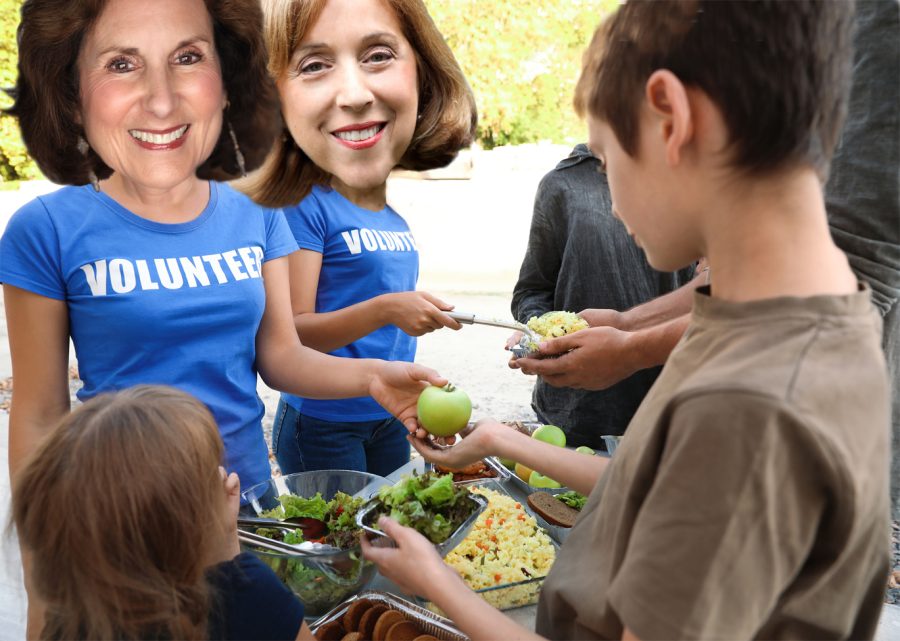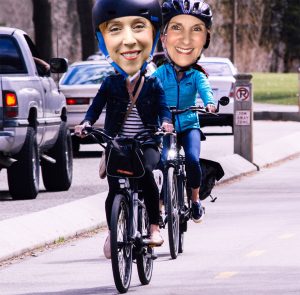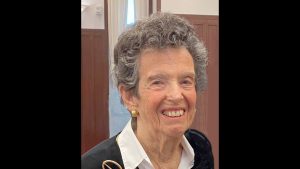Life lessons at 50 plus: What is your legacy?
Published January 11, 2022
Margaret (Meg) Crane lived most of her life in St. Louis, was associate editor of the Jewish Light in the early 70s and from 2001-2012, was senior writer for Jewish Federation. Two years ago, she moved to New York City to be closer to family living there. Barbara Ballinger, originally from New York, lived in St. Louis for 23 years and worked at the St. Louis Post Dispatch. She now lives in upstate New York. Follow their blog here.
You’ve heard the term “legacy” bandied about. It’s what you do going forward to leave behind for the next generations. It’s not a new idea. And for those of us who are 50-plus, it’s something each of us might want to think about as our days—or term as in a Presidential run–may be shorter rather than longer.
Case in point. Former President Obama secured his legacy in what was one of the most transformative weeks (June 22-26, 2015) in our American history. This is based on key Supreme Court decisions endorsing same sex marriage, the Affordable Care Act/Obama Care, housing discrimination suits that no longer have to show intent, passage of the controversial trade agreements, the fall of the confederate flag, and the eloquent and searing eulogy on modern race relations and grace and forgiveness at the funeral of South Carolina State Senator Clementa Pickney, the pastor who was fatally shot in his Emanuel AME Church along with eight others in June of 2015.
Now is the time each of us can do our part to help provide a healthy, vibrant future for generations to come. Fortunately, you don’t need to be a billionaire or even millionaire to build your legacy. Anyone can do it, rich and poor, and leave the world a better place than you found it. Here are just a few possibilities we imagine:
Tend your garden close to home. If you’ve been lucky enough to have children or stepchildren, grandchildren, and still have a parent or parents, aunts and uncles, you can be a daily role model of giving–of yourself, your resources, your unconditional love and your best behavior. Draw those closest to you into caring relationships and extend that caring outward. Pay attention and respond to the needs of others in addition to your relatives—a friend or a stranger — precisely because that person is in need, not because there’s a payoff.
Be a social activist. Whether it’s about climate control, racism, poverty, right to work or any cause that you care about. Use current technology like texting, blogging, Twitter, Zoom, Instagram, YouTube, Vine, Facebook, et al to help bring about social change. Or use conventional means—write a book, an article, an op-ed for your local or national newspaper, give speeches, hold a protest rally, circulate a petition online, support a political candidate who espouses your same values. These actions create not just ripples but powerful tides for generations.
Give big with recognition in mind. Your name can live on forever if you can afford to do so. We’re talking about big sums that might allow you to etch in stone your name in giant type on the side, inside or front of a hospital building, museum, gallery exhibit space, athletic center, university library or dining hall, or whatever institution has been most near and dear to your heart. This giving requires deep pockets.
Consider some examples. Stephen A. Schwarzman, Blackstone founder, donated $150 million to his college, Yale University, to create a world-class, state-of-the-art campus center by renovating the school’s historic Commons and Memorial Hall. It will be named in his honor. David Koch donated $65 million to the Metropolitan Museum of Art for its David H. Koch Plaza, which includes new fountains, 106 trees, and new lighting. Carol Vassiliadis designated gifts totaling $8.5 million to the UC San Diego Jacobs Medical Center, which will be known as the “A. Vassiliadis Family Hospital for Advanced Surgery.” Look around your town or city, and you’re apt to notice the names that are there for posterity.
What’s the motive here? Is it to make the world a better place? Is it a way to give back to the community as a token of gratitude? Or is instead about something less grand, like seeing your name on a building as an ego trip? Is it about getting a huge tax deduction? It could be all of these. Of course, the donor wants the recognition, it’s some type of immortality, and, quite frankly, who are we to pass judgment when what they do is good for the community?
As grateful as we are as a society to accept this type of largesse, we have some suggestions with more systemic investments. Along with the buildings and names they bear, today’s philanthropists might also consider throwing in some funds, maybe even anonymously, as an endowment or philanthropic fund for what’s less obvious and not up in lights—investing in good people, testing new ideas–money for more books to fill those library shelves, scholarships to help poorer students afford to eat in the college dining room, better art for museum walls, free tickets to that concert hall for those who can’t afford the price of admission, music and art education in public schools and why not some funds to repair infrastructure such as all the potholes on all those streets leading to these fabulous destinations bearing family names? If you want to make a real impact, you must work inside the system, too.
Donate according to your heart and the various levels of Maimonides’ ladder or hierarchy of giving. Not everyone can give the same amount or with the same warm hand and heart. Do what works for you. Maimonides (also known as Rambam), a 12th-century Jewish scholar and physician, recognized that people have different intentions. He devised the concept of a ladder of giving with the bottom rung representing the lowest degree of virtue, and each one thereafter a little bit nobler.
We’d like to give this an updated spin and be a tad less judgmental by saying: Give however you can; anything is better than nothing, except when it hurts someone in need; then, it’s better not to give at all. Writer Julie Salamon explored this in her book back in 2003, Rambam’s Ladder: A Meditation on Generosity and Why It is Necessary to Give.
Give in your community, a nonprofit, a church, temple, mosque in any way you can; it’s given you a place to call home. For those whose time, interest, and funds may be limited, there are still plenty you can do. We’ve come up with our top list of 13 ways. Find what works best for you whether you’re a people person who wants a direct connection with others or thrive more by helping on the sidelines away from the spotlight. We bet after you try any of these once or twice, it may be too rewarding to stop.
- Find an aging senior who’s in need of some companionship and kindness. Maybe that person needs a book read to them, an afternoon spent at a park or zoo, an errand run, someone to drive them, or a visit to a bookstore, ice cream or candy shop. Make the connection and keep the relationship going and growing by setting up a specific time and place to get together each week or each month or whatever.
- Mentor a child living in a housing project, orphanage or foster system through one of many nonprofit organizations in your area. Most offer training programs and will require a background check to make sure you’re safe to be around children.
- Volunteer to bake at a boys’ or girls’ club or some after-school program that sells treats to raise funds for special outings. Barbara did a baking project in years past and loved working with young more skilled bakers. Or teach a class there gratis. Margaret did a teaching stint at a boys’ club in St. Louis with a friend who organized it a few years ago.
- Tutor someone who’s struggling in school and whose parents can’t afford the high prices tutors now command, or maybe they don’t have parents at all to motivate them. This gives them a boost, some valuable one-on-one time to talk and vent, and you can show them the joy of learning. Margaret does so weekly, now virtually during COVID, and loves her interaction with the kids and figuring out creative ways to capture their attention and help them learn.
- If you mentor or tutor a child, such as through Big Brothers Big Sisters, take them on a special outing or a group of kids to a place you know about and share your wisdom—at a museum, a park, a baseball stadium.
- Serve on your local Chamber of Commerce or village’s equivalent to make your community a better place to live. Improve parking, parks, streets, safety, anything that needs tweaking.
- Work in a soup kitchen and not just at Thanksgiving or Christmas but once a month or six times a year. The number doesn’t matter. What does is feeding hungry stomachs and hearts.
- Donate your unworn clothing, old books, CDs, magazines and furniture once a month to an organization in need of these types of contributions. Many at our age are trying to downsize and this is better than throwing things into a dumpster. Don’t have anything? Volunteer at a place to fold items, line them up, tag them, hand them out to those in need. Stock shelves at a food pantry or hand out food weekly.
- Help plant a community garden whether you live in a city or suburb and have access to a plot in the ground or on a roof. Everyone likes fresh produce. Not into dirt and digging? Buy the tools, seeds, hoses. Love worms and squishy soil? Plant, remove weeds, pull out and transform what’s growing into bouquets or gazpacho soup. Give the overflow to a local food bank. The community will look and smell better, too.
- Organize a community fundraiser in honor or memory of someone important in the town that gets held yearly. Use the funds for what’s most needed—a new flagpole, annual town picnic, new bike racks and bikes, a free bookshelf.
- Organize a community parade and not on Memorial Day but another time, which is held once a year and maybe becomes a fundraiser, too. It could be on the day of the town’s founding.
- Read to children or groups at your local public library once a week or once a month. If you’re a grandparent, it’s a wonderful way to learn about the best children’s books on the market. Teach mahjong, chess or computer skills at the library to seniors or teens if you’re competent. Many libraries have become senior community and teen centers.
- Consider becoming a social entrepreneur. If you’re retired and looking for something to do, come up with an idea for a business that will help society. While a business entrepreneur might create entirely new industries, a social entrepreneur develops innovative solutions to social problems. It’s a wonderful way to channel your energy and ideas and serve as a change agent.
Two examples cited by Carla Tishler, Managing Editor, HBS Working Knowledge, include: Housing Works in New York City, which employs people with AIDS for their various businesses, and Food from the Hood, founded in South Central Los Angeles, which employs inner-city kids in urban agriculture and sells salad dressing, apple sauce, and other products. Profits go into a scholarship fund for the young people who participate in the program.
The bottom line is the same. While you’re alive and well, pay it forward. You’ll rarely regret the decision, and, in fact, you’ll find that looking forward rather than backward will keep you so busy you’ll forget you’re past 50, 60, 70 or 80.
If you have additional suggestions or a good story about leaving your legacy, please share them with us.

















